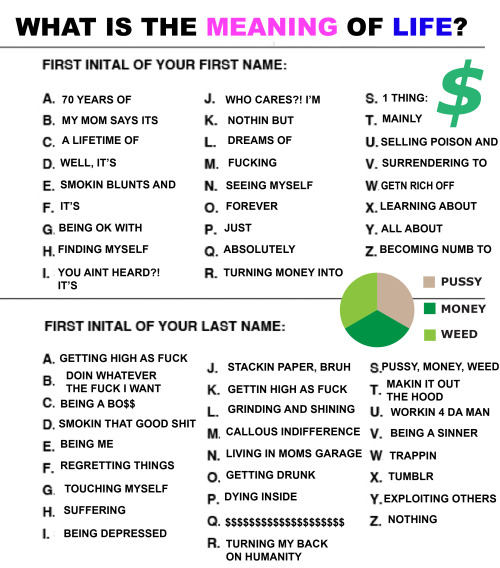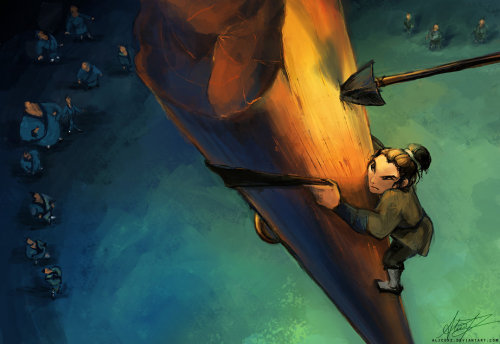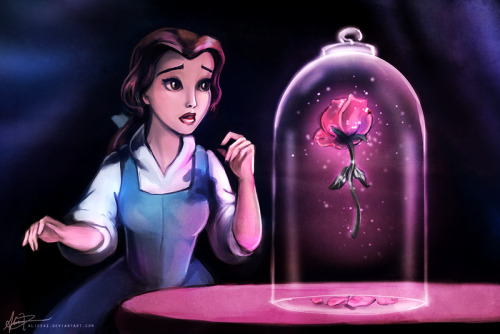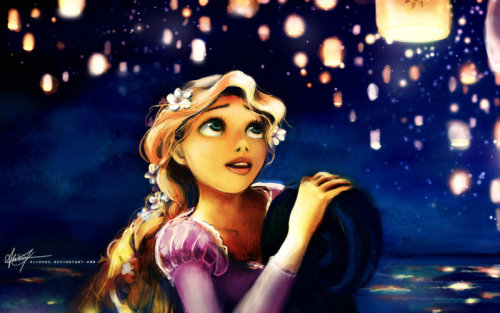The Tale Of The Kuchisake-onna
The tale of the Kuchisake-onna
The tale of the Kuchisake-onna dates back to the 17th to 19th century in Japan and is described as a woman mutilated, with her mouth split from ear to ear. The tale has various origins, claiming that she either was the adulterous wife or mistress of a great samurai that he became so outraged at hearing his wife was unfaithful that he slashed his wife’s mouth from ear to ear as punishment. Other tales claimed that she was once a great beauty and a jealous woman cut her; or that she had a dental procedure gone wrong. Either way, she died of the blood loss, and she came back as a malevolent spirit who appears to you and asks, ‘Am I pretty?’ Or, ‘Am I beautiful.’

She appears on a usually foggy night to a stranger, according to Kuchisake-Onna | Creepypasta Wiki | Fandom, haunting different places, wearing a mask that hides her face. She will stop a person and ask you directly, ‘‘Do you think I’m beautiful?’’ The person will usually answer, ‘‘Yes,’’ causing her to lower the mask to show off the hideous bloodied scars and ask, ‘‘What about now?’’ If you say no, scissors will appear in her hand, and she will slash you to death. If you still say yes, she will give you the same markings that show on her face, leaving you with the same fate. ‘‘There are several ways to prevent this terrible fate. One, to confuse Kuchisake-Onna by saying: "You are average." Two, present her with hard amber candy, which she'll take much delight in and let you go. Three, say ‘Pomade’ six times, and she will flee. Four, ask her if you are beautiful, which will confuse her hopefully long enough to escape. But be wary. She is said to be incredibly fast and will be unlikely to stop.‘‘

So if you see a strange woman on the street wearing a mask to stop you and ask the words, ‘Am I pretty/Do you think I’m beautiful?’’ I suggest that you adopt an NYC attitude (I can say this, I am from New York) and drop some candies before walking or sprinting away!
More Posts from Arieso226 and Others
70 years of being a boss. Yeah

What is the meaning of life?
The Black Women Movements
NO.1
Many movements came out after the Emancipation (freeing of the slaves) Proclamation, and even though some were hand-chosen, they were mostly male oriented, whereas women movements were pushed aside and forgotten.
The Black Women’s National Club Movement was the first woman movement set in the 1890s, where their primary concern was for family and the community. They desired freedom by using centering family values and unity, and the dynamic relationship between black women and men. ‘’Black women organized, throughout the nineteenth century, at first on a local, later on a state and national level, to undertake educational, philanthropic and welfare activities. Urbanization, the urgent needs of the poor in a period of rapid industrialization and the presence of a sizeable group of educated women with leisure led to the emergence of a national club movement of white women after the Civil War. Similar conditions did not begin to operate in the black communities until the 1890s, when local clubs in a number of different cities began almost simultaneously to form federations.’’
Other movements, like the National Federal of African American women started in 1895, where their concerns were resistance to slavery, black women’s concern for education, the lynching of children, men and women, sexual abuse from white men, healthcare, childcare for orphans, care for the elderly, job training for the youth and various but broad subject for social justice.
The National Council of Negro Women was another important movement, ‘’ founded and organized in 1935 by the late Dr. Mary McLeod Bethune for the purpose of planning and directing Negro women to greater economic, social, educational and cultural development in local communities and on the national and international levels. The aspects of the national program are therefore varied and include departments which deal specifically with citizenship education, human relations, international relations, education, labor and industry, archives and museums, public relations, religious education and fellowship, social welfare and youth conservation. The National Program Committee feels that conferences may be used effectively as a technique to synthesize the activities of these various departments.’’
NO. 2
Most of these movements were discarded and disbanded because of the lack of support from black men and the racism they were also receiving by white women and men alike. The attitudes of sexism and racism go hand in hand, and as we progress through the centuries, a study comes out of that: Black Women’s Studies. ‘’Black Women’s Studies emerged in part because of the failure of Black and Women’s Studies to address adequately the unique experiences of black women in America and throughout the world. Attempts to celebrate the existence of distinct black female literary tradition in America, which can be traced further back in time, also fall under the rubric of Black Women’s Studies because they acknowledge the politics of sex as well as the politics of race in the texts of black women writers. This celebration has taken place in two phases. The first phase is characterized by efforts to document that such a tradition exists.’’
Education is power, since knowledge, the knowledge of our past and our present can only help us persevere to our future, and that has been denied to us since the time of slavery. ‘’Education has persisted as one of the most consistent themes in the life, thought, struggle, and protest of black Americans. It has been viewed as a major avenue for acquiring first class citizenship. There is a large body of research that takes into account the educational experiences of Afro-Americans. Black female educators such as Mary McLeod Bethune, Charlotte Hawkins Brown, Lucy Laney, Fanny Jackson Coppin and Nannie Helen Burroughs are mentioned in some Afro-American history sources and in some instances are receiving attention in theses and dissertations. While this publication documents ‘the historical significance of black female educators in twentieth century America, beyond the role of teacher’, it is important that we establish to some extent an historical context for understanding the very basic struggle in which black women have been engaged to acquire an education and to utilize that education as a professional.’’
NO. 3
The main statement discussed repeatedly in Black Women studies is centered around race, class, gender and sexuality, which all have an important part to play while surviving in America. That it is why it is so important to discuss such serious topics with like-minded individuals, those who yearn for the freedom and privileges that other citizens have, because even though we have our freedom, oppression is still prevalent. Around the world, women of every origin face the same problems. ‘’ The history of women’s movements in the Middle East has received much attention in recent years. Studies have been devoted to the advent of these movements, their development, activities, politics, organizing style and central figures. Preliminary attempts at comparative analysis of these women’s movements have also been made. In 1999, Ellen Fleishmann published a comprehensive comparative article entitled, ‘The Other ‘Awakening’: The Emergence of Women’s Movements in the Modern Middle East, 1900-1940’. In this first stage, ‘The Awakening’, women and men began to raise the issue of women’s status and to question related social practices. This stage is also typified by the emergence of varied women’s organizations and by women’s efforts to enhance girls’ education. In the second stage, ‘‘Women and Nationalism’, women adopted nationalism as a liberating discourse linking their involvement in nationalist movements with women’s emancipation. The third stage, designated ‘State Feminism’, is characterized by ‘women’s co-optation by, and collusion and/or collision with, the state-building project, resulting in the evolution of state feminism.’’
NO. 4
In Ireland, the ‘problems is that most mechanisms for choosing representatives tend to refract, not reflect, the composition of society, and some groups will always be marginalized even if not formally. The Northern Ireland Women’s Coalition is only one example of a movement party. Though unusual, more than 50 women’s parties have formed the world over 1945, in places such as Israel, Belarus, Russia, India, the Philippines, Belgium, and Iran. The experiences of these parties are diverse but in at least two other situations, Iceland and Israel, strong scholarship demonstrates that women’s parties have succeeded in drawing public attention to issues of female marginalization and put ‘gender politics on the political map for the first time.’ In Iceland, in particular, the effect of the women’s party in pressuring the other parties to adapt their behavior and policy commitments to facilitate inclusiveness is well documented.’’
In conclusion, women deserve to get attention for their efforts to change society just as much as anybody else who has felt the sting of oppression no matter what the gender. Race, sex, class and gender all define who we are in the society, and it is without the benefits of education given to all the people no matter where they come from, are we truly lost.
Yep

How Climate Change is threatening Culture's Worldwide
NO.1
Mass relocations are a thing that is set to happen thanks to climate change. And as more natural disasters happen that circuits the need for climate change education, more doomsday scenarios appear instead of healthy solutions to help save the planet--with the water rising from melting ice caps, it is destroying island and southern communities, and producing record number droughts in different sides of the planet. Why then does the media frame climate change as something inevitable, and how does that produce apathy, not just in regular people, but in these companies as well?

NO. 2
The research about climate change is all about education; informing the public about counter-options to reduce carbon levels in the air. I know this could benefit one person, if not the whole group, and that is what’s important. So how do we define apathy toward climate change? Well, the definition of apathy first is a lack of feeling or emotion towards something. It is based on a variety of subjects, like race, sex, education, age, food, culture, groups of people, etc. How does apathy relate to other negative concepts like indifference, and how are those emotions dangerous? ‘’How does apathy come to exist? Through ignorance of a toxic and uncoordinated action. Framing is used as an institution and illustrates how it shapes media framing in a toxic event. Even in systems who are supposed to help the average person, are people seen to have a ‘tendency to behave in accordance with what they see as being in their own interests.’’

NO. 3
From “Climate Change and Planned Relocation in Oceania.” Sicherheit Und Frieden (S+F) / Security and Peace, vol. 34, no. 1, 2016, pp. 60–65: ‘‘The sinking islands have become a symbol of the consequences of manmade global warming. The foreshadowing of climate change-related environments and social developments that will affect other parts of the world sooner rather than later. In the current academic and political discourse, migration figures prominently among the social effects of climate change, and climate change-induced migration-conflict nexus, and research and findings have become ever more complex and sophisticated, trying disentangle the ‘long and uncertain casual chains from climate change to social consequences like conflict.’’
NO. 4
In conclusion, the Guna Yala tribe will not be the last island community to relocate because of the rising sea level, thanks to climate change. In fact, billions of people are going to be fleeing, and forced to relocate because of the threatening climate, and the United Nations Framework Convention for Climate Change understands (UNFCCC). From Climate Change and Planned Relocation: HOW CLIMATE RESETTLEMENT CAN WORK FOR COMMUNITIES. Danish Institute for International Studies, 2017: Entire cultures and societies will have to cope with the ‘‘ability to foster broader resilience-oriented solutions driven by the livelihood needs and strategies of the communities in question. When relocation is found to be necessary, [like in the Guna Yala tribe’s case], it should be approached as an expansion of existing livelihood strategies and mobility patterns, not an end to them.’’

Mean World Syndrome
NO. 1
Mean World Syndrome is a theory the sociologist George Gerbner, creator of the Cultural Indicator’s Project, where three quarters of Americans believe in high level of crime, even though statistics show it is low. In the media, there is too much sex and violence, more so than the average person will ever see a day in their lives, and it has become repetitive, too routine, as the storytelling of violence seem ‘normal’. Since 1995, the demand for guns to ‘protect themselves’ has been at an all time high, and so is the fear, fear that everyone in the world is a suspect. But most importantly, is the image of the bad guys coming to get them. 2/3 of Americans get their information from the media, mostly the news, which creates negative stereotypes of minorities, who are seen as violent and aggressive.
NO. 2 Take for instance, Latina’s, who make up 15% in population in America, are portrayed by the media as aggressors, seen as ‘rapists and gangbangers’ or ‘murderers’. They are also the subject of illegal immigration, which all together creates dehumanizing effects. Then, there’s the vilification of Arabs and Muslims, as bloodthirsty terrorists, that are linked to violence and terror, and the subject of torture/ing of these people is ‘okay as long as it’s a good guy doing it’’. 39% of Americans actually believes that American-born Muslims are not loyal to the country’s ideals, and so not loyal to them. And finally, African-Americans are twice as likely to be seen as perpetrators. In the media, it is harmful showing black people as great middle/class, successful people, then as violent and aggressive in the next slide, as if to say some people choose that type of lifestyle, that they are simply a product of their environment. White people are five times more than likely to be criminalized by whites than black people, yet it’s not white people being shown almost everyday on the news for braking crimes.
The result of all this is the active fear in everyday Americans that makes us less likely to be compassionate, and more hardened to anyone and everyone. It also increases a high demand for national security, and believing that we have to lock these ‘criminals in cages where they belong.’
Cultivation Theory is the examination of the long term effects of television. Media cultivates a set of values, meanings, expectations, understanding, etc. which is the culture now in the modern century. Mass media replacement of community-based storytellers, it advances corporate interests (increasing profits and sales) since Americans spend a lot of time with the media. The effects are becoming more systemic and all encompassing. We need to start asking questions, like who is being represented in the media, who is the victim, and who is in the cast, and what are their fates. Who is generally casted as the good guy, and who is casted as the bad guy. We can look to the Media Database (IMDb) to see who is making the cultural object, and what is the main subject. Mean World Syndrome relates to this theory, through intersections of race, gender, ethnicity, criminal justice and the international border. We need to understand who is creating these TV shows/films, since America has such a global reach, it attracts the largest audience. Sociologists are not condemning media, but the constant repetition of ‘happy violence’—where in the film, show, or media, the good guy faces has a challenge, fights and action and explosions reoccurs, he stops the evil doer, saves the damsel, and the day is saved! It’s boring, cliché and the same story over and over again— and the various franchises and storylines springing from these corporations because it slows down progress and keeps negative stereotypes alive, some of them extremely damaging.
I like Mulan better







The Train Derailment in Ohio
NO. 1
On February 3rd, dozens of cars belonging to Norfolk Southern train went off track in East Palestine, Ohio, spilling gigantic amounts of toxic chemicals into the soil, water, and air, killing over 3500 fish have died; locals of the town affected are experiencing nausea, headaches, burning eye sensations and more. Residents have also reported that foxes, chickens, cows, and house pets are dying as a result of the toxin chemical release. The chemical released from the crash, vinyl chloride, is extremely toxic and can severely affect an individual’s liver, kidney, lung, nervous system, and blood. It is highly dangerous and can lead to cancer.

NO. 2
The government-controlled burned the hazardous chemicals, since left untouched could cause an even bigger explosion, and residents were asked to leave at first on February 6th. On February 8th, residents were asked to come back, with officials claiming the area was safe to come back to. Except, residents are claiming that this is not only a government and corporation issue but a massive ecological disaster from which we might not return. The derailment has caused massive environmental problems because scientists and scholars fear that the toxin waste will spread throughout the Ohio River, as it is connected to rivers and basins in 14 states, providing drinking water to over 5 million Americans. The smell of chlorine was reportedly lingering in the air days after the controlled burn and when residents were returning. When vinyl chloride burns, it decomposes into hydrogen chloride and phosgene, with the latter highly poisonous, used in WW1 as a choking agent. Hydrogen chloride is irritating and corrosive to any tissue with which it comes to contact. The viral video of a local news reporter quietly talking about the event and being arrested for doing his job has sparked state outrage.
NO. 3
So, how did this happen, and who is responsible? The horrible disaster is nicknamed Chernobyl 2.0 as residents feel fear and anger over Norfolk Southern and the government’s response to the devastation, which they feel is inadequate. Rail workers tried to strike over unsafe conditions but were forced back to work by the government back in 2011. Norfolk Southern announced a $10 billion stock in March last year while cutting their workforce down to the bones rather than investing in better equipment, more workers, and allowing sick days. Stricter environmental laws and regulations should be at the forefront, instead of the allowance of corporate greed, not to mention the blatant disregard for public safety. More attention should be devoted to this topic, not only for public awareness but to shed light on the role big business plays in increasing pollution and environmental degradation.


Vogue Arabia
Apologies
I know that I haven’t been able to write any more of these ‘blogs’, and I have to admit the first two weren’t any good. But inspiration has struck, and I am thankful for my family’s encouragement to keep writing. I hope to do these things weekly, written with any given topic
-
 mahoushoujodoinky liked this · 2 years ago
mahoushoujodoinky liked this · 2 years ago -
 tenmaei liked this · 2 years ago
tenmaei liked this · 2 years ago -
 miss-little-chaperone liked this · 2 years ago
miss-little-chaperone liked this · 2 years ago -
 a-bit-of-japanology liked this · 2 years ago
a-bit-of-japanology liked this · 2 years ago -
 arieso226 reblogged this · 2 years ago
arieso226 reblogged this · 2 years ago
26-year-old Anthro-Influencer Anthropology, blogger, traveler, mythological buff! Check out my ebook on Mythology today👉🏾 https://www.ariellecanate.com/
208 posts

